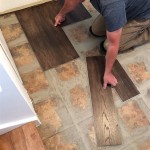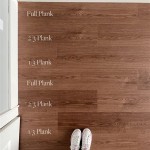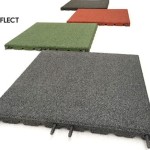How To Remove Carpet Glue From Wood Flooring
Removing carpet glue from wood flooring is a task that demands patience, the right tools, and a methodical approach. Carpet glue, also known as carpet adhesive, is designed for strong adhesion, making its removal from the porous surface of wood flooring a challenging endeavor. The approach to take depends on the type of glue used, the type of wood flooring, and the amount of residue present.
Identifying the type of glue is often the first step, though it may not always be possible. Older adhesives may be solvent-based, while newer ones are typically water-based. Understanding the adhesive type, if possible, will inform the selection of the appropriate removal methods and cleaning agents.
Before initiating any removal process, it is crucial to protect the surrounding areas. This involves covering nearby walls and furniture with plastic sheeting to prevent damage from splashing solvents or scraping tools. Proper ventilation is also essential, especially when working with chemical solvents.
It is worth noting that certain wood flooring types are more susceptible to damage during the adhesive removal process. Softer woods like pine may dent or scratch more easily than harder woods like oak or maple. Furthermore, engineered wood flooring with a thin veneer layer requires extra caution to avoid sanding through the veneer.
Key Point 1: Initial Preparation and Safety Measures
The initial stage prioritizes minimizing damage and ensuring personal safety. This involves several critical steps:
Assessment of the Glue and Flooring: Attempt to determine the type of adhesive used. Water-based adhesives are typically easier to remove than solvent-based ones. Identify the type of wood flooring (solid hardwood, engineered wood, etc.) to ascertain its durability and potential for damage.
Protecting the Work Area: Cover adjacent walls, furniture, and other surfaces with plastic sheeting. This will safeguard them from accidental splashes of solvents or damage from scraping tools. Use painter’s tape to secure the plastic sheeting in place and create a clean barrier.
Ensuring Adequate Ventilation: Open windows and doors to create a cross-breeze. Use a fan to circulate air and dissipate any fumes from solvents. If ventilation is limited, consider wearing a respirator mask equipped with appropriate filters to protect against inhaling harmful vapors.
Personal Protective Equipment (PPE): Wear safety glasses to protect the eyes from splashes and debris. Wear gloves made of a solvent-resistant material to protect the skin from chemical exposure. Long sleeves and pants will further minimize skin contact with chemicals.
Testing in an Inconspicuous Area: Before applying any solvent or cleaning agent to the entire floor, test it in a small, hidden area, such as under a piece of furniture or in a closet. This will help determine if the solvent will damage or discolor the wood finish. Allow the test area to dry completely to assess the results accurately.
Key Point 2: Methods for Removing Carpet Glue
Multiple methods exist for removing carpet glue from wood flooring, each with its own advantages and disadvantages. The choice of method depends on the type of glue, the type of wood, and the extent of the residue.
Mechanical Removal (Scraping): This method involves using a scraper to physically remove the adhesive. A plastic scraper is generally preferred to minimize the risk of scratching the wood. For stubborn glue, a metal scraper may be necessary, but it should be used with extreme caution to avoid damaging the flooring. Heat can be applied with a heat gun (on a low setting) to soften the glue before scraping. The heat gun should be moved constantly to avoid scorching the wood.
Solvent-Based Removers: Various solvents can dissolve carpet adhesive. Mineral spirits, acetone, and specialized adhesive removers are common choices. Always follow the manufacturer’s instructions for the specific solvent being used. Apply the solvent to a small area and allow it to dwell for the recommended time. Then, use a scraper to remove the softened glue. Wipe the area with a clean cloth to remove any remaining solvent residue. Repeat as needed.
Heat Gun Application: A heat gun can soften the adhesive, making it easier to scrape away. It's crucial to use a low heat setting and keep the heat gun moving to prevent scorching the wood. Direct the heat at the glue for a few seconds, then immediately try scraping the softened adhesive. Repeat this process until the glue is removed.
Steam Cleaning: Steam can also soften carpet adhesive. A steam cleaner can be used to loosen the glue, making it easier to scrape away. Use a steam cleaner with a nozzle attachment to focus the steam on the glue. After steaming, immediately scrape away the softened adhesive. Wipe the area with a clean cloth to remove any moisture.
Citrus-Based Cleaners: Citrus-based cleaners are a more natural alternative to solvent-based removers. They are effective at dissolving certain types of adhesives. Apply the cleaner to the glue, allow it to dwell for the recommended time, and then scrape away the softened adhesive. Wipe the area with a clean cloth to remove any remaining residue.
Applying a Paste of Baking Soda and Oil: Mix baking soda with a small amount of cooking oil (such as olive oil or vegetable oil) to form a thick paste. Apply the paste to the adhesive and let it sit for several hours or overnight. The baking soda and oil will help to loosen the glue, making it easier to scrape away. Wipe away any remaining paste with a damp cloth.
Using Ice: Applying ice to the adhesive can make it brittle and easier to break apart. Place a bag of ice on the glue for several minutes. Then, try to break apart the adhesive with a scraper. This method works best on smaller areas of glue.
Key Point 3: Post-Removal Cleaning and Restoration
After the carpet glue has been removed, the wood flooring requires thorough cleaning and potential restoration to ensure it is free of residue and restored to its original appearance.
Cleaning the Floor: After removing the glue, wash the floor with a wood-safe cleaner. Use a damp mop or cloth to avoid saturating the wood. Follow the manufacturer’s instructions for the specific cleaner being used. Rinse the floor with clean water to remove any remaining cleaner residue. Dry the floor thoroughly with a clean cloth.
Addressing Staining and Discoloration: If the adhesive has left stains or discoloration on the wood, sanding may be necessary. Use a fine-grit sandpaper (220-grit or higher) to lightly sand the affected areas. Be careful not to sand too aggressively, as this could damage the wood. Vacuum up the sanding dust and wipe the area with a clean cloth.
Repairing Scratches and Gouges: If the removal process has resulted in scratches or gouges in the wood, wood filler can be used to repair them. Apply the wood filler to the damaged areas, following the manufacturer’s instructions. Allow the filler to dry completely, then sand it smooth with fine-grit sandpaper. Vacuum up the sanding dust and wipe the area with a clean cloth.
Refinishing the Floor: After sanding and repairing any damage, it may be necessary to refinish the floor to restore its original appearance. Apply a wood stain that matches the existing color of the floor. Allow the stain to dry completely, then apply a coat of polyurethane or other wood finish. Follow the manufacturer’s instructions for the specific stain and finish being used. Allow the finish to dry completely before walking on the floor.
Applying a Wood Conditioner: A wood conditioner can help to restore moisture to the wood and prevent it from drying out. Apply the conditioner to the floor with a clean cloth, following the manufacturer’s instructions. Allow the conditioner to soak into the wood for the recommended time, then wipe away any excess.
Buffing the Floor: Buffing the floor can help to smooth out the finish and create a glossy sheen. Use a floor buffer with a soft buffing pad. Buff the floor in overlapping strokes, following the manufacturer’s instructions. Vacuum up any dust created by the buffing process.
Applying a Protective Coating: Consider applying a protective coating to the floor to prevent future damage. A wax or polyurethane coating can help to protect the wood from scratches, stains, and moisture. Apply the coating according to the manufacturer’s instructions. Allow the coating to dry completely before walking on the floor.
Proper removal of carpet adhesive from wood flooring requires diligent preparation, the correct tools and methods, and careful attention to detail. Prioritizing safety and taking steps to minimize damage will increase the likelihood of a successful outcome, restoring the wood flooring to its former condition.

Removing Glue Or Adhesive From Hardwood Floors The Speckled Goat

Flooring How Can I Remove Carpet Adhesive From Hardwood Floors Home Improvement Stack Exchange

How To Remove Carpet Glue From Hardwood Floors Servicewhale

Removing Glue Or Adhesive From Hardwood Floors The Speckled Goat

How To Remove Carpet Glue Goo Gone

How To Remove Carpet Glue From Wood Concrete Floors Ultimate Diy Guide

How To Remove Glue From Wood Floors Pete S

3 Fast Easy Ways To Remove Carpet Glue From A Wood Floor

Removing Glue Or Adhesive From Hardwood Floors The Speckled Goat

Removing Carpet Glue Off Wood With Cooking Oil I Tried It And Let Soak For About 10 Minutes Did All Of This In A Half Hour No Harsh Chemicals
See Also







